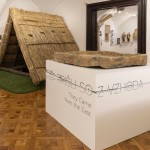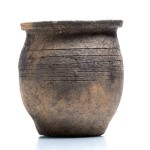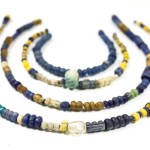They came from the East
The early medieval period is particularly important for the settlement of the Prekmurje region, as the first Slavic settlements and burial sites were discovered in the fields south of Murska Sobota. Simple Slavic dwellings - earthworks, ovens, wells, outbuildings and, above all, the characteristic handmade pottery and baking ovens are indicative of early Slavic settlement in the 6th century. Most Slavic settlements in the area existed in the 7th and 8th centuries.
Among the finds from the settlements metal and bone objects and pottery can be attributed to the Avars.
Burnt, skeletal and under-mound burials were found in the four excavated burial sites, dating from the late 7th to the early 12th century. Grave goods included belt buckles, knives and jewellery, as well as everyday objects.
Life on Slavic settlements died out in the 9th century. In the mid-9th century, the region became part of the Lower Pannonian Principality, with its administrative centre in Blatenski Kostel near Lake Balaton (today Zalavár in Hungary). With the invasion and settlement of the Hungarians at the end of the 9th and the beginning of the 10th centuries, Pannonia was devastated, leading to a more modest settlement and even the disappearance of settlements in the vicinity of Murska Sobota. However, new settlements emerged, sustaining the settlement in the area from the 10th to the 13th centuries.
Photo in the banner advert: Earrings and necklace from a child's grave from the Slavic burial site at Plese in Murska Sobota (first half of the 9th century).(photo: Tomislav Vrečič)





